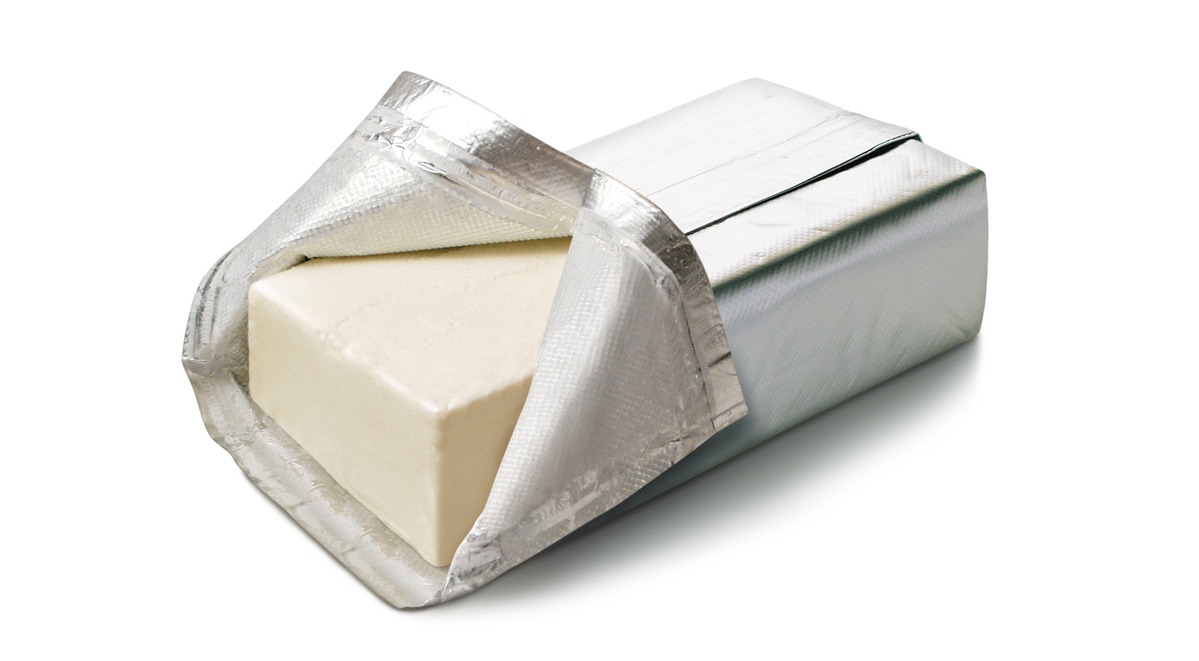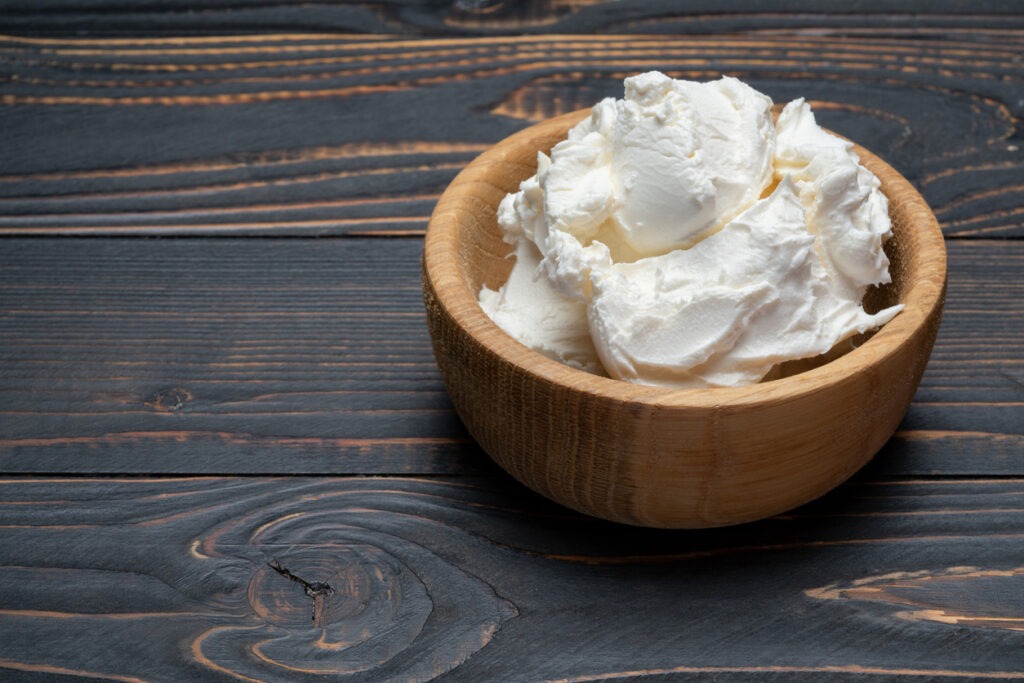Cream cheese is freshly made soft cheese using cream and milk. It has a mild but rich taste with nearly white, containing a high-fat content. Cream cheese is not naturally matured and requires fresh consumption, so it differs from other soft cheeses. It is used in sweets and a wide range of other delights worldwide. Plus, cream cheese is simple to make at home is a plus. As simple and easy as it is to create, cream cheese needs to be given due time to come out perfect.
In certain nations, such as Canada and the US, cream cheese is classified as having a moisture content of 55% and containing around one-third of milk fat. It is often spread on bagels, bread, crackers, etc. Furthermore, you can also use it to make cheesecake, another favorite food item of many.
You probably have a brick of cream cheese in your fridge right now and might need handy information on your cream cheese or if you are someone who wants to try their hands at making cream cheese, give this article a read. Let’s discuss everything from things you need to consider to the products you could use.
History of Cream Cheese
Cream cheese is considered one of the oldest cheeses in France, tracing back its first recorded documentation in 1583, but its origin can be taken back to 1043. French cheese requires more maturity before serving, making it different from American cheese.
With its long history, cream cheese became significantly known as the bagel’s best friend. This type of cheese is made from whole or skim milk with spreadable consistency and was first made in Europe in the village of Neufchatel-en-Bray, Normandy, France, and became naturally called French Neufchatel. They came in different shapes and sizes. Cylindrical, square, box-shaped, and heart-shaped became commercially and agriculturally famous.
The ensuing years made other countries create their version of cream cheese. The United States began its very own version of cream cheese in the late 19th century. Today, American cheese is decreed with its commercial formula of at least 33% milkfat and 55% moisture with a pH balance between 4.4 and 4.9, and the milk must be from the cow.
Types of Cream Cheese
1. Original Cream Cheese
Original cream cheese has the features of moderate acidity and mild sweetness. It is a plain cheese that spreads smoothly at room temperature. This type of cheese is the perfect way to transform your bagel into a more flavorful afternoon snack but with a lesser added taste than flavored ones.
2. Flavored Cream Cheese
Flavored cream cheese comes in different varieties. Fruit-flavored cream cheese, chive and onion cream cheese, herb and garlic cream cheese, and jalapeno cream cheese are just a few of the added flavors that come perfectly with cream cheese. You can even make your flavored cream cheese at home. Depending on your liking, flavor varieties are controlled with an assurance of freshness and limit over sugar and salt.
3. Reduce-fat Cream Cheese
By choosing this lighter version, you can enjoy your cream cheese without the excess fat and calories. Reduced-fat cream cheese or low-fat cream cheese has about half the fat and about 40% fewer calories than regular cream cheese.
Whether spreading cream cheese on a bagel, mixing it into a sauce, or spreading it onto a salmon sandwich, there is a lesser probability of noticing the difference between low-fat cream cheese and regular cream cheese. But its healthier characteristic may change your mind.
4. Cream Cheese Spread
Spread cheese is a saltier, spreadable version of cream cheese that is more often available in grocery stores. Cream cheese spread is highly recommended for direct consumption as it is saltier and is not meant for heat cooking. It has a light and stretchy texture because of incorporating air in the making process. The air reduces the amount of sweetness, producing less fat than regular cream cheese.
5. Whipped Cream Cheese
Whipped cream is a flavorful addition to cakes, hot chocolate, and many other sweet treats. Traditionally, it is made by whipping cream with a whisk or mixer until light and fluffy. One variation of whipped plain cream comes from Philadelphia. It contains whey protein, nonfat and fat milk, salt, cheese culture, stabilizers, etc., which are healthy and pack immense nutritional value.
Uses of Cream Cheese
1. Bagels and Cream Cheese
With softness and creamy texture, cream cheese is a splendid pair for bagels. Its mild sweetness adds a tasty bit of heaven to your pastry. As cream cheese brings out the flavor of the bagel, with its not overpowering feature is ideal for any bread.
2. Cream Cheese Frosting
Cream cheese adds the right touch to the sweet buttercream frosting, making it irresistible to our taste buds. Using cream cheese as a base for a creamy frosting adds a new level of flavor to any dessert. The added element of being tangy, either sweet or salty, adds the right tinge of fluffiness, enhancing the taste.
3. Cream Cheese Dips and Spreads
Instead of your usual mayo, cream cheese as dips and spreads add creaminess, and it’s the perfect companion for your fresh-cut vegetables, crackers, bread, or even chips. While cream cheese offers a saltier version of a spread compared to other types of spread, it complements well any afternoon snack you deserve after a heavy morning.
4. Cream Cheese in Cooking and Baking
Other dairy products, such as yogurt and buttermilk, can also be used in cake dough, but cream cheese is best used as a topping for any baking product you opt to make. However, if you want to experiment more, a dollop of cream cheese for a pastry product such as a cupcake before baking results in an embedded icing that is delicious for any occasion.
5. Cream Cheese as a Substitute
Cream cheese’s mild, slightly sweet flavor makes it an excellent substitute for milk. But always remember that cream cheese has a thicker texture than regular milk.
Also, many low-fat cookie recipes use cream cheese instead of butter. You can even explore and use cream cheese as a substitute for egg, where binding is required.
How to Store and Serve Cream Cheese
Proper Storage
Always check the expiration date tab and buy the furthest out. Remember that the shell life of an unopened cream cheese in your refrigerator depends on the type of cheese you store. Generally, you can keep regular cream cheese longer than flavored ones or reduced-fat varieties.
Use whatever variety of cream cheese you buy within ten days after opening. Once you open the foil-wrapped cream cheese, don’t just fold the wrapper over at the exposed edge. Put the cream cheese in an airtight or resealable bag and store it. Do not leave cream cheese at normal temperature for more than 3 hours, as it may get spoiled.
How to Soften Cream Cheese
One way to soften cream cheese is to let it come to room temperature. This process will take an hour or two. You can also soften the cream cheese by whisking it in a bowl of a hand mixer or food processor for about a minute.
Serving Suggestions for Cream Cheese
Cream cheese can be served as a dip, spread, toppings, or even an extra puff to your homemade ice cream. For the health-conscious, cream cheese can be perfect for leafy vegetables and sliced tomatoes. A single serving of cream cheese is roughly 1-2 tablespoons and can be enough for different serving styles.
Conclusion
Cream cheese is a versatile and delicious ingredient that can be used in various ways. The possibilities are endless, from spreading them on bagels to using them in baking and cooking. With proper storage and serving techniques, cream cheese can be enjoyed for its delicious taste and creamy texture.


